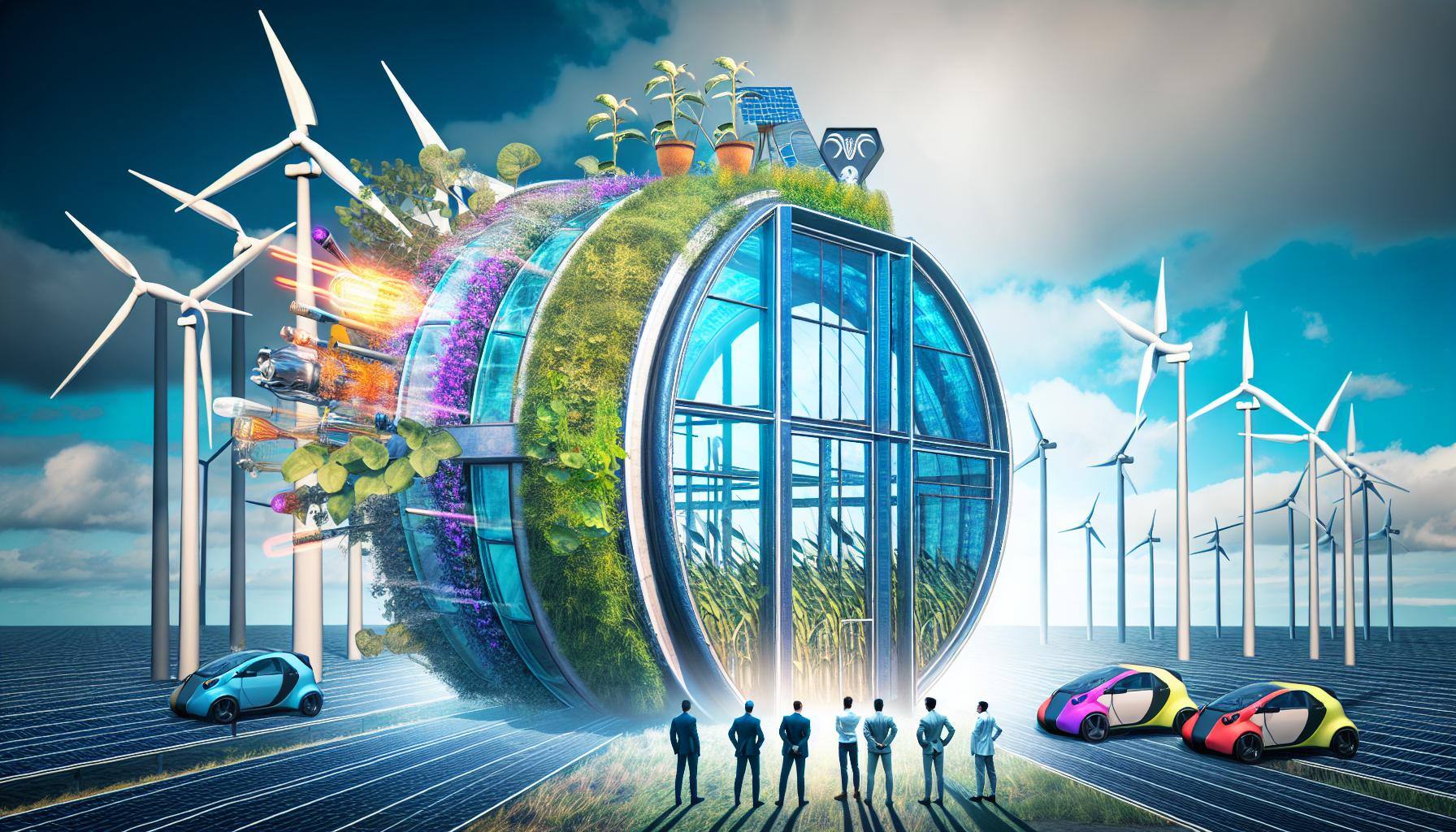"Reduce greenhouse gas emissions in line with the updated OECD Guidelines."
As the world grapples with the pressing issue of climate change, a beacon of hope emerges in the form of the Greenhouse Gas Reduction Fund (GGRF). This groundbreaking initiative is a crucial step toward mitigating the devastating effects of global warming, and it's essential to understand how it works to make a meaningful impact.
The Greenhouse Gas Reduction Fund (GGRF) is a groundbreaking $27 billion federal investment to address the climate crisis and promote environmental justice in the United States. This historic initiative, authorized under the Inflation Reduction Act and administered by the Environmental Protection Agency (EPA), marks a significant step towards reducing greenhouse gas emissions and creating a more sustainable future.
With the clock ticking and the stakes higher than ever, the GGRF is a vital component in the fight against climate change, and it's time to explore its significance.
The Greenhouse Gas Reduction Fund (GGRF) is a crucial initiative to reduce greenhouse gas emissions and mitigate climate change impacts. This blog will explore the GGRF's details, objectives, and significance in combating climate change.
What is the Greenhouse Gas Reduction Fund (GGRF)?
The GGRF is a fund that supports projects and initiatives that reduce greenhouse gas emissions and promote sustainable development. The fund is designed to provide financial support to projects that have the potential to significantly reduce emissions and contribute to a cleaner, healthier environment.
Objectives of the GGRF
 The primary objectives of the GGRF are to:
The primary objectives of the GGRF are to:
-
Reduce Greenhouse Gas Emissions: The fund aims to reduce greenhouse gas emissions by supporting projects that promote renewable energy sources, increase energy efficiency, and reduce energy consumption.
-
Promote Sustainable Development: The GGRF also aims to promote sustainable development by supporting projects that enhance biodiversity, protect ecosystems, and promote sustainable land use practices.
-
Support Climate-Resilient Infrastructure: The fund supports the development of climate-resilient infrastructure, such as sea walls, flood protection systems, and green roofs, to help communities adapt to the impacts of climate change.
How Does the GGRF Work?
The GGRF provides financial support to projects meeting its eligibility criteria. The fund is managed by a governing body that reviews and approves project proposals based on their potential to reduce greenhouse gas emissions and promote sustainable development.
Benefits of the GGRF
The GGRF offers several benefits, including:
-
Reduced Greenhouse Gas Emissions: The GGRF supports projects that reduce greenhouse gas emissions, helping mitigate climate change's impacts and promote a cleaner environment.
-
Job Creation and Economic Growth: The fund supports projects that create jobs and stimulate local economies, contributing to economic growth and development.
-
Improved Public Health: The GGRF promotes clean energy and reduces air pollution, helping to improve public health and reduce the negative impacts of climate change on human health.
Key Components and Impact
The GGRF is divided into three competition programs, each with distinct objectives:
-
National Clean Investment Fund (NCIF): This program will invest $14 billion in clean energy projects, focusing on reducing emissions and creating jobs in low-income and disadvantaged communities.
-
Clean Communities Investment Accelerator (CCIA): With a budget of $6 billion, CCIA will support community development financial institutions (CDFIs) and green banks in deploying capital to projects that benefit low-income and disadvantaged communities.
-
Solar for All Competition: This program will provide $7 billion in grants for solar energy projects, prioritizing historically overlooked and underserved communities.
The GGRF is expected to impact the environment and local communities profoundly. By 2024, it is projected to:
- Reduce greenhouse gas emissions by 310 million metric tons
- Deploy over $250 billion in private and public investment over the next decade
- Create hundreds of thousands of jobs over the next seven years
Implementation and Challenges
 To maximize the fund's impact, stakeholders must work together to address several challenges:
To maximize the fund's impact, stakeholders must work together to address several challenges:
-
-
-
Timely Disbursement: The EPA must disburse funds quickly to ensure that projects can be implemented efficiently.
-
Capacity Building: CDFIs and green banks must develop the capacity to deploy large finance volumes to low-income communities.
-
Coordination: The diverse range of stakeholders involved in the GGRF ecosystem must coordinate effectively to ensure that resources are allocated efficiently.
-
-
Opportunities for Collaboration
The GGRF presents a transformative opportunity for various actors to collaborate and drive positive change:
-
Community Development Financial Institutions (CDFIs): These organizations will be critical in mobilizing financing for projects that benefit low-income and disadvantaged communities.
-
Green Banks: These institutions will provide the initial capital for local community lenders to invest in projects that meet the GGRF's objectives.
-
Philanthropy: Foundations can participate in the GGRF by providing technical assistance and supporting the development of project pipelines.
Prioritizing Environmental Justice
The GGRF is designed to deliver environmental justice to underinvested communities of color and low-income communities that bear the most significant burdens of climate change. By channeling federal funds through community development financial institutions (CDFIs) and green banks, the fund aims to increase access to financing for sustainable projects and promote just and sustainable economic development.
Conclusion
The Greenhouse Gas Reduction Fund presents a historic opportunity to address the climate crisis, ensure economic competitiveness, and promote energy independence while delivering lower energy costs and economic revitalization to vulnerable communities. By leveraging this fund effectively, we can create a virtuous cycle that increases wealth and resilience while cutting emissions. All stakeholders, including government agencies, community groups, financial institutions, and philanthropies, must work together to realize this transformative investment's full potential.



.jpg)